Financial Analysis and Implications of ASCIT's Budgetary Trends and Dues Increase
Last year, members of ASCIT, which is the entirety of all undergraduate students at Caltech, voted to raise dues from $33 per an academic term to $40 per an academic term by an overwhelming margin. Despite this amendment passing, as ASCIT Treasurer, I feel the need to further detail the previous and current states of ASCIT’s finances, the implications the dues increase will have in the future for the corporation, and the further justification of increasing dues last spring.
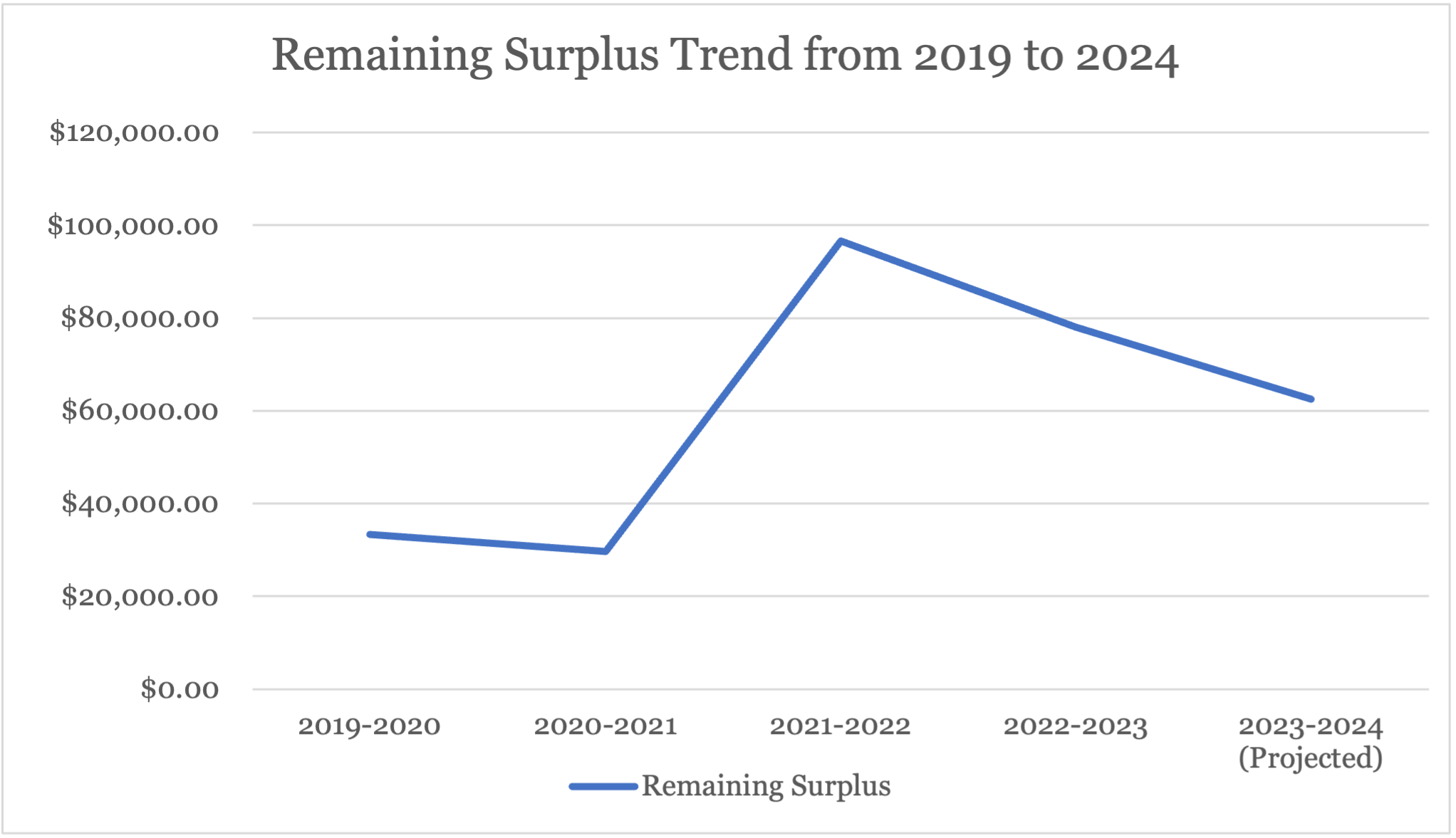 Figure 1. Remaining Surplus Trend from 2019 to Projected 2024: This figure charts the progression of the remaining surplus over five fiscal years, displaying an unusual surge in 2021-2022 during the pandemic and a decline in subsequent years. The significant increase in surplus during the pandemic year indicates a decrease in expenses or a rise in revenue, poten- tially due to pandemic-related restrictions.
Figure 1. Remaining Surplus Trend from 2019 to Projected 2024: This figure charts the progression of the remaining surplus over five fiscal years, displaying an unusual surge in 2021-2022 during the pandemic and a decline in subsequent years. The significant increase in surplus during the pandemic year indicates a decrease in expenses or a rise in revenue, poten- tially due to pandemic-related restrictions.
The data and supplementary information provide valuable insights into ASCIT’s financial trajectory over the last few years and how decisions made by the Board of Directors (BoD) have influenced the budget.
The first noticeable trend is that the remaining surplus has been fluctuating since 2019-2020, hitting a low in 2020-2021 before rebounding significantly in 2021-2022 and then declining again (Figure 4). This fluctuation seems to be in response to changes in the projected revenue and budgeted expenses each year, likely due to the impacts of COVID-19 and subsequent recovery efforts (Figures 2 and 3).
For instance, budgeted expenses increased dramatically in 2021-2022, following the reintroduction of social events after the pandemic (Figure 2). However, the projected revenue for this year did not match this increase, leading to a higher total expenditure than revenue for that year (Figure 1). Even with the increase in expenses, the remaining surplus still increased due to the large surplus carried over from the previous year (Figure 4). This pattern continued in 2022-2023, with the total expenditure exceeding the projected revenue again, reducing the remaining surplus (Figures 1 and 4).
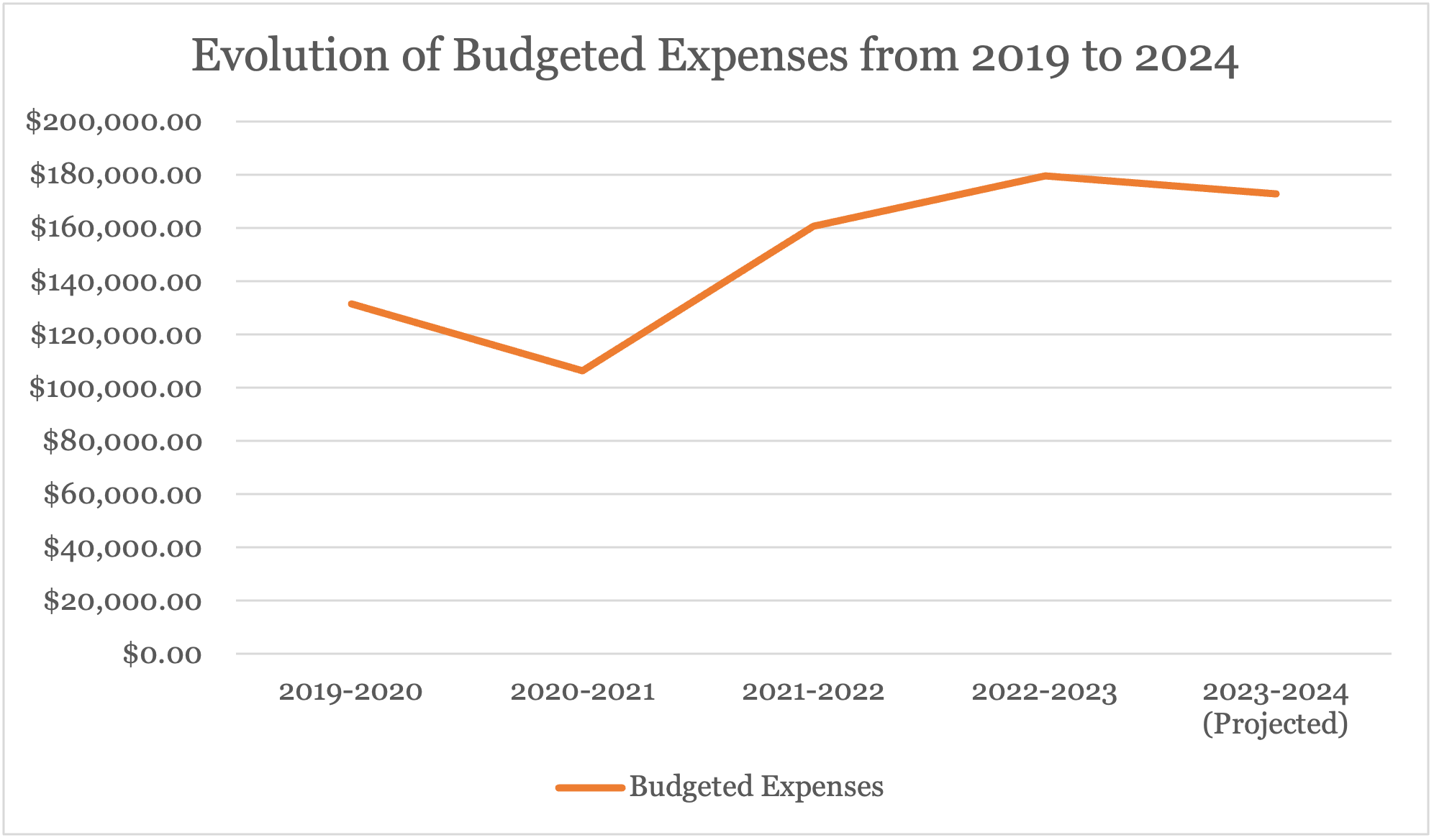
Figure 2. Evolution of Budgeted Expenses from 2019 to Projected 2024: This figure highlights the budgeted expenses over a five-year span, with a noticeable escalation during and post COVID-19 pandemic, and a steady rise thereafter, particularly evident from 2021-2022. The trend underscores the organization’s adaptation to increased operational costs post-pandemic.
The increase in expenses is directly related to ASCIT’s initiatives to facilitate more social programming (Figure 2). The reinstatement of substantial events such as the ASCIT Formal, the registration of approximately 100 new clubs, and the introduction of new events like the Winter Carnival and Multicultural Fashion Show have all contributed to the increased expenses (Figure 2).
Given these trends and the projected data for the 2023-2024 fiscal year (Figures 1 and 3), the decision by the BoD to raise student dues during the 2022-2023 school year appears justified. This increase could potentially generate an additional $21,000 annually for the ASCIT general fund, helping to balance the budget and maintain the programs and services provided by ASCIT.
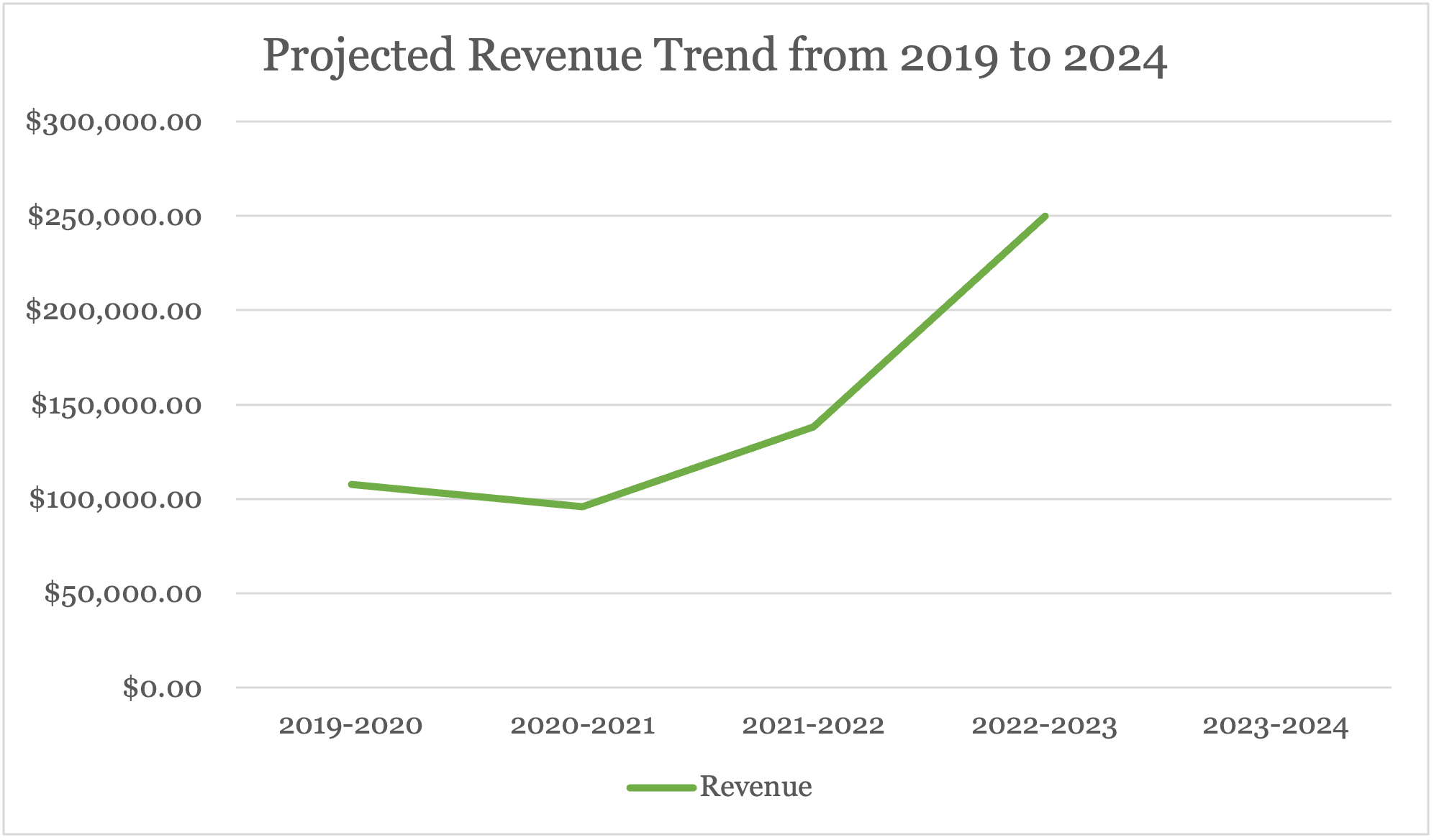
Figure 3. Projected Revenue Trend from 2019 to 2024: This figure portrays the changes in projected revenue, which exhibits a dip during the pandemic period of 2020-2021, followed by an upward trajectory in 2021-2022 and 2022-2023. This upwards trend after a year of decline, especially in 2022-2023, suggests a proactive role by the Board of Directors in securing external funding. Projected revenue for the 2023-2024 school year cannot be determined at this time.
However, the dues increase will not occur until the 2024-2025 school year. Given the current trends (Figures 1, 2, 3, and 4), this will put pressure on the 2023-2024 budget, as the increased costs associated with the expanded programming and event offerings are likely to continue, while the additional revenue from the dues increase will not yet be available.
The dues increase is one solution to achieve a balanced budget in the foreseeable future (Figure 1). It would provide a reliable and predictable source of revenue to offset the increasing expenses (Figure 2). However, it is not a comprehensive solution. It is likely to cover the current deficit but might not be sufficient to accommodate future growth, given the increasing demand for social programming and rising costs due to inflation coupled with a growing student population (Figures 1 and 2).
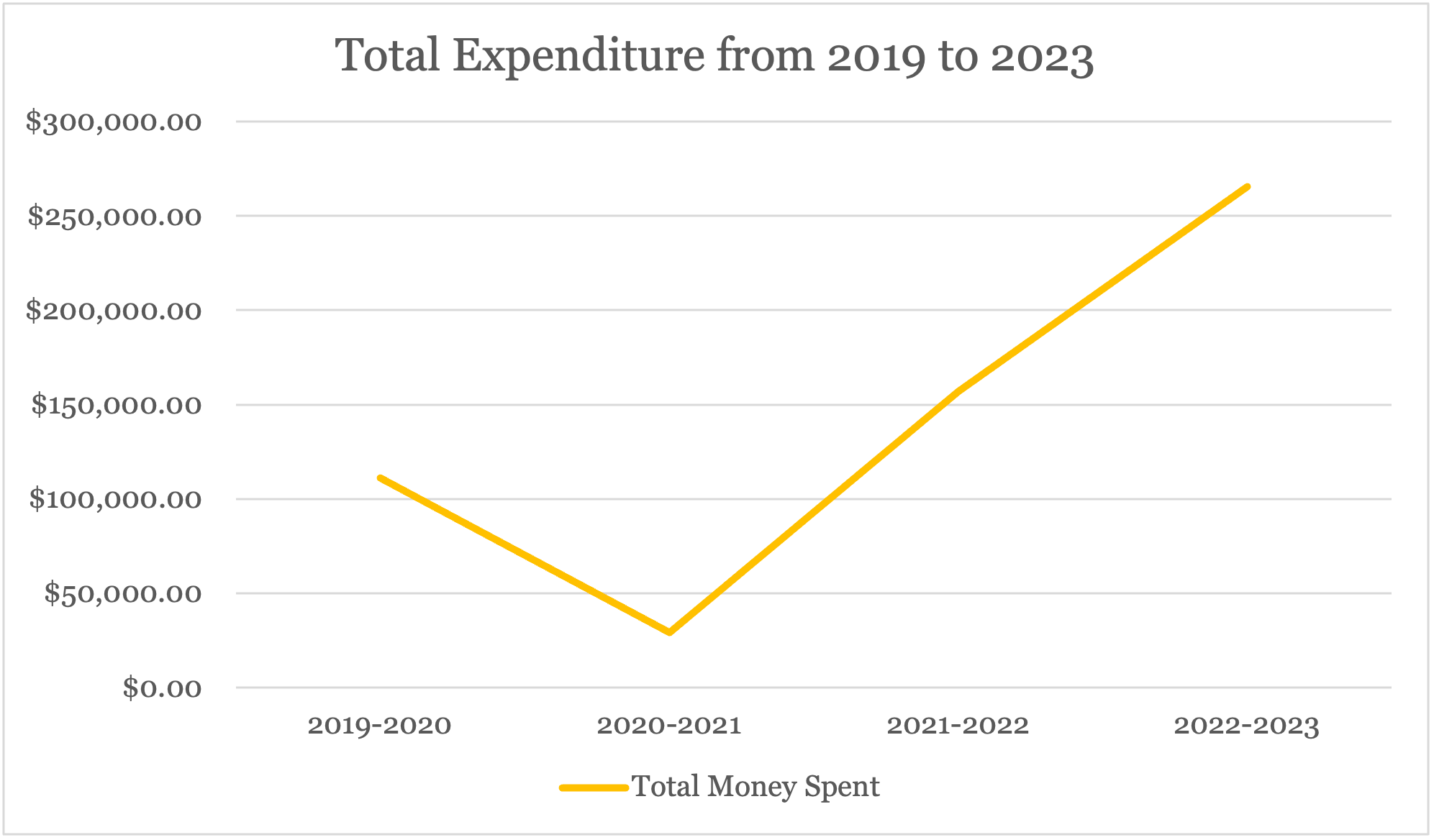
Figure 4. Total Expenditure from 2019 to 2023: This figure traces the total amount spent each fiscal year from 2019 to 2023, revealing a general trend of increased spending post-pandemic. Despite a drop in expenditure in 2021-2022, a significant surge is observed in 2022-2023, potentially reflecting an active effort by the Board of Directors to capitalize on external funding. This pattern underscores the financial adjustments made in response to changing circumstances during and after the pandemic.
Furthermore, relying solely on dues increase to balance the budget could put a financial burden on students and limit the participation of those unable to afford the increased dues. A more sustainable solution will need to involve a combination of strategies such as securing additional external funding, exploring cost-saving measures, and improving financial management practices.
In terms of large projects such as renovations of the Student Activity Center (SAC) and large-scale events like a campus concert, the dues increase alone will not provide sufficient funds. These projects typically require significant upfront costs. For example, the cost to renovate the average room is approximately $15,000 per a room. additional revenue from the dues increase might not cover these costs entirely. Therefore, external funding, partnerships, and fundraising might be necessary to undertake such initiatives.
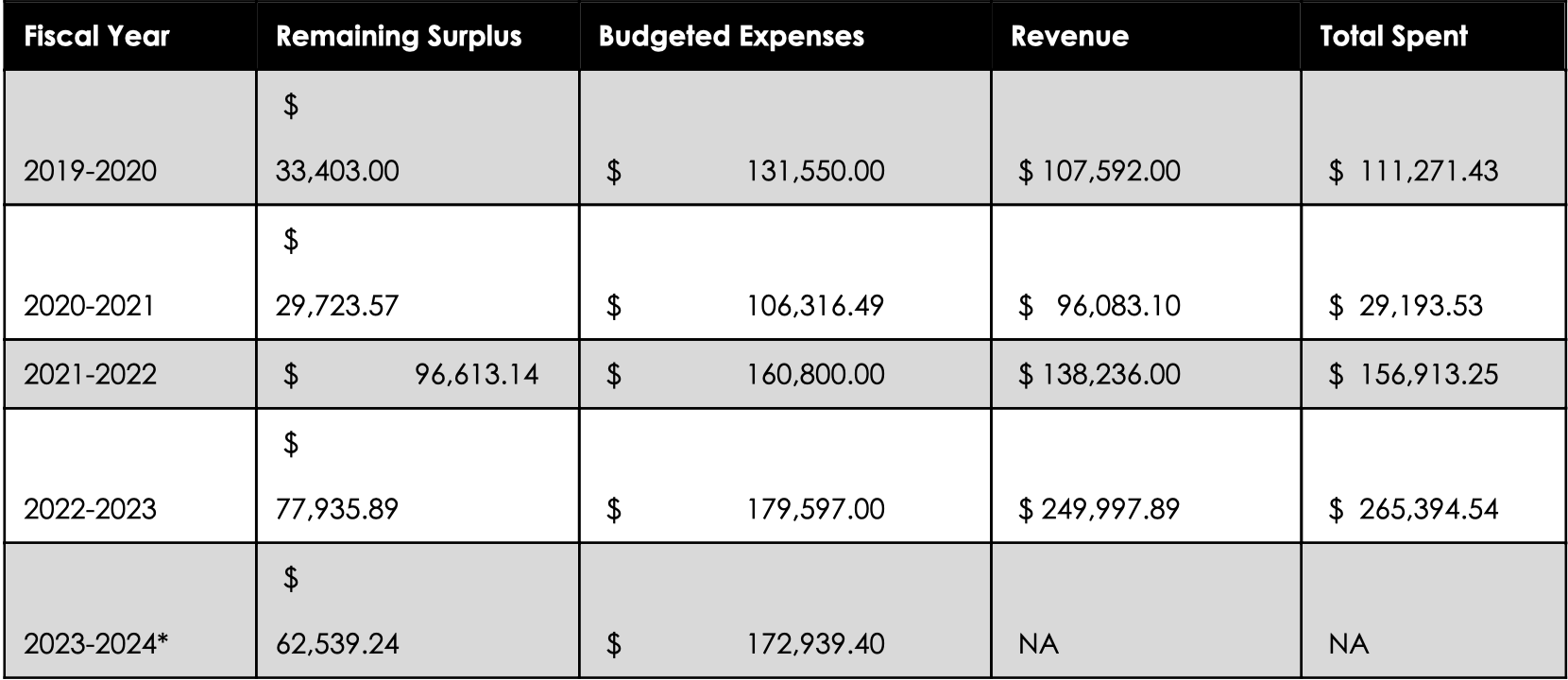
Table 1. Detailed Breakdown of ASCIT’s Fiscal Activities from 2019 to 2024*. This table presents the yearly data of ASCIT’s remaining surplus, budgeted expenses, revenue, and total spent amounts from the fiscal year 2019-2020 to 2023-2024. Each column corresponds to the data represented in Figures 1-4. The asterisk (*) denotes projected values for the upcoming 2023-2024 school year, for which full data is not yet available.
To conclude, the data shows that the BoD’s decision to raise dues was a strategic response to the increasing costs associated with expanded programming and student demand (Figures 1, 2, 3, and 4). However, this solution comes with its own challenges and limitations. Going forward, ASCIT will need to continue exploring diverse revenue sources and cost-saving measures to maintain its financial health and continue providing valuable services and events to the student body.